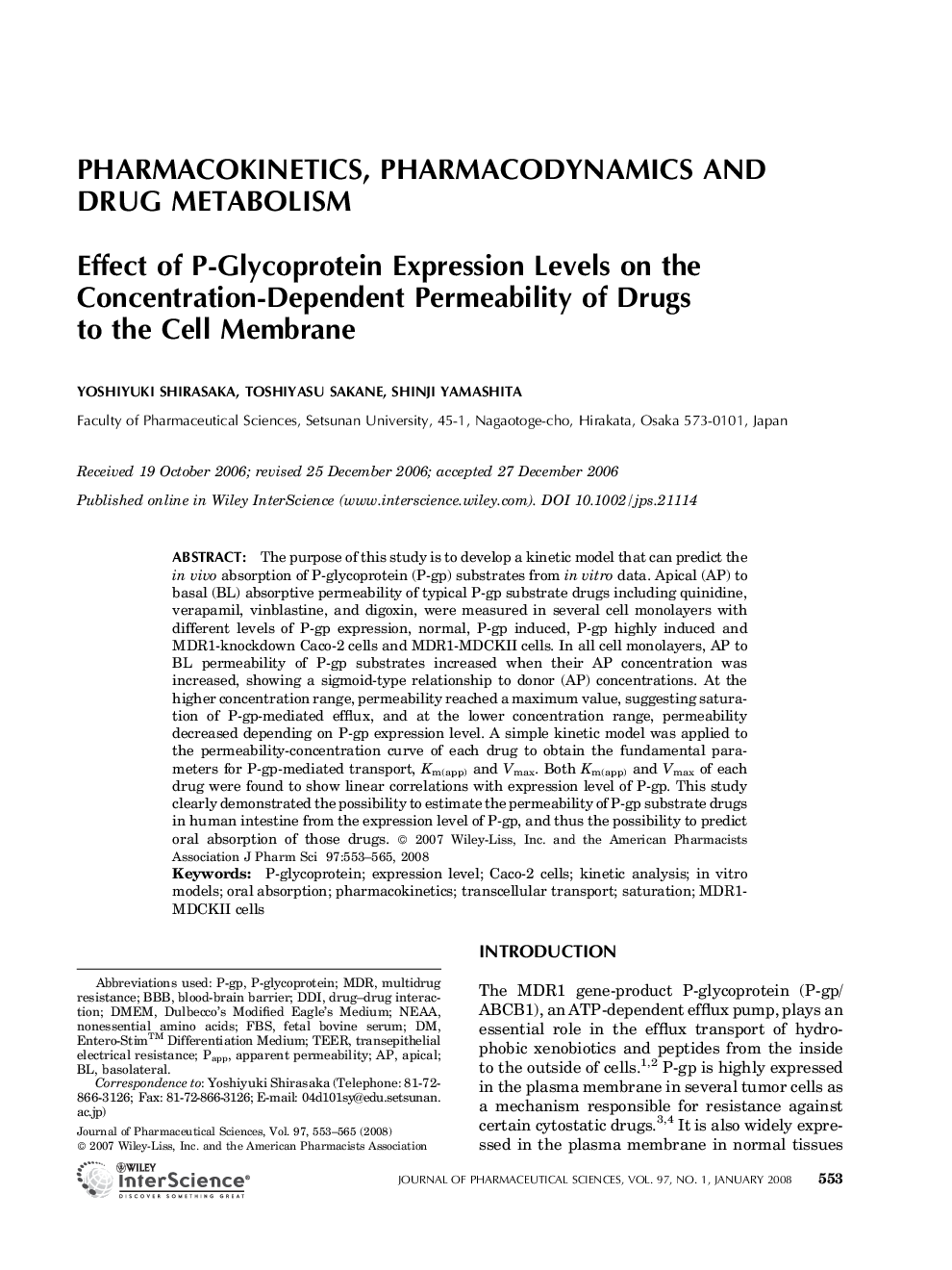| Article ID | Journal | Published Year | Pages | File Type |
|---|---|---|---|---|
| 2487615 | Journal of Pharmaceutical Sciences | 2008 | 13 Pages |
ABSTRACTThe purpose of this study is to develop a kinetic model that can predict the in vivo absorption of P‐glycoprotein (P‐gp) substrates from in vitro data. Apical (AP) to basal (BL) absorptive permeability of typical P‐gp substrate drugs including quinidine, verapamil, vinblastine, and digoxin, were measured in several cell monolayers with different levels of P‐gp expression, normal, P‐gp induced, P‐gp highly induced and MDR1‐knockdown Caco‐2 cells and MDR1‐MDCKII cells. In all cell monolayers, AP to BL permeability of P‐gp substrates increased when their AP concentration was increased, showing a sigmoid‐type relationship to donor (AP) concentrations. At the higher concentration range, permeability reached a maximum value, suggesting saturation of P‐gp‐mediated efflux, and at the lower concentration range, permeability decreased depending on P‐gp expression level. A simple kinetic model was applied to the permeability‐concentration curve of each drug to obtain the fundamental parameters for P‐gp‐mediated transport, Km(app) and Vmax. Both Km(app) and Vmax of each drug were found to show linear correlations with expression level of P‐gp. This study clearly demonstrated the possibility to estimate the permeability of P‐gp substrate drugs in human intestine from the expression level of P‐gp, and thus the possibility to predict oral absorption of those drugs. © 2007 Wiley‐Liss, Inc. and the American Pharmacists Association J Pharm Sci 97:553–565, 2008
